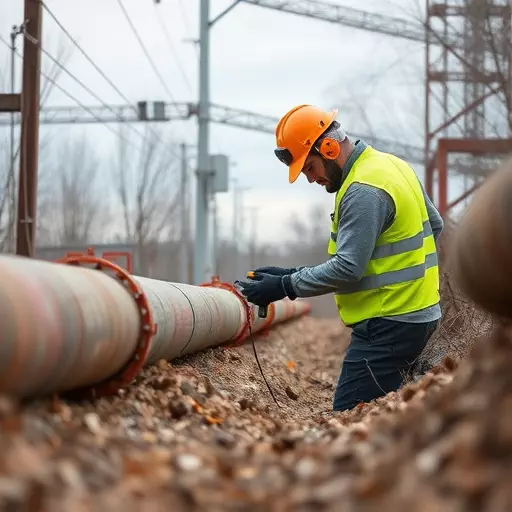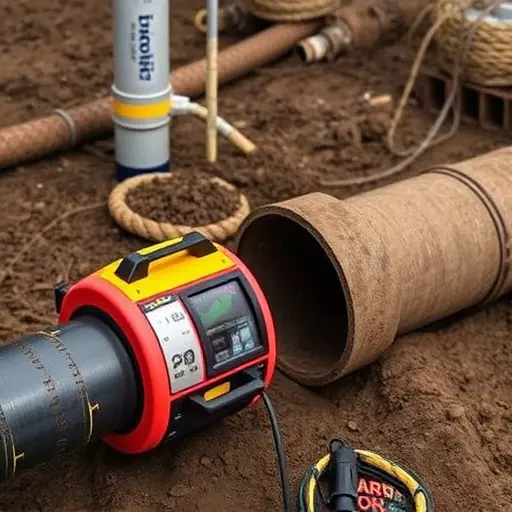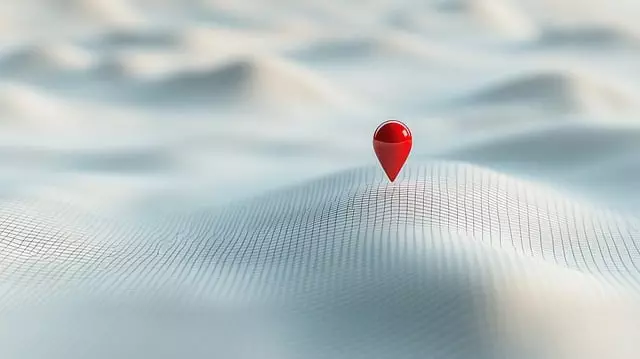The evolution of sonde locating technology in Toledo has transformed infrastructure management from manual, 20th-century methods to sophisticated, modern tools. Integrations of GPS, sensors, and digital data processing enhance accuracy, enable real-time tracking, and improve cost-effectiveness. Future advancements like LiDAR, GPR, and real-time data visualization promise even greater precision and efficiency in pipe and utility locating, ensuring safer and more disruptive-free development for Toledo's future.
“The future of infrastructure maintenance is here, driven by innovative sonde locating technology. This article explores the evolution of this field, from historical perspectives to cutting-edge advancements. We delve into emerging trends transforming pipe and utility locating, with a focus on advanced sonde equipment enhancing precision and efficiency. Furthermore, we examine how innovation is revolutionizing sonde and locating techniques, offering efficient solutions for modern challenges in the industry.”
- Evolution of Sonde Locating Technology: A Historical Perspective
- Emerging Trends Shaping the Future of Pipe and Utility Locating
- Advanced Sonde Equipment: Enhancing Precision and Efficiency
- The Role of Innovation in Revolutionizing Sonde Locating Techniques
Evolution of Sonde Locating Technology: A Historical Perspective

The evolution of sonde locating technology traces back to the early 20th century when the first mechanical sondes were developed for simple pipe and utility location. These initial devices, primarily used in construction and civil engineering, relied on manual operation and basic visual cues. Over time, the industry witnessed a significant shift towards more sophisticated technologies as the need for precise and efficient location methods grew.
In recent decades, advancements in electronics and computer systems have revolutionized sonde locating technology. Modern sonde equipment for pipe locating now incorporates GPS, advanced sensors, and digital data processing capabilities. These improvements allow for real-time tracking, enhanced accuracy, and the ability to detect various underground utilities, including pipes, cables, and lines. The transition from traditional methods to these innovative techniques has not only improved safety but also enabled faster and more cost-effective infrastructure management.
Emerging Trends Shaping the Future of Pipe and Utility Locating

The future of pipe and utility locating is being reshaped by several emerging trends, driven largely by technological advancements in sonde equipment for pipe locating. One prominent shift is the integration of advanced sensing technologies like LiDAR and ground-penetrating radar (GPR) into sonde and locating techniques. These tools offer enhanced accuracy and detailed subsurface imaging, making it easier to identify pipes and utilities beneath surfaces. This is particularly beneficial in complex urban environments where navigating through bustling streets and labyrinthine infrastructures pose significant challenges.
Additionally, there’s a growing emphasis on real-time data visualization and remote operation of locating equipment. Newer sonde systems are equipped with sophisticated software that allows technicians to monitor progress and interpret data from a distance, thereby improving efficiency and safety. These innovations in sonde and locating techniques promise to revolutionize the industry, ensuring faster, more precise, and cost-effective pipe and utility locating in the years to come.
Advanced Sonde Equipment: Enhancing Precision and Efficiency

Advanced sonde equipment is revolutionizing the field of sonde and locating techniques, offering unprecedented precision and efficiency in the process of pipe locating. Modern sondes are equipped with cutting-edge technology such as high-resolution sensors, advanced imaging capabilities, and real-time data processing. These innovations enable locators to accurately identify and map underground utilities with greater speed and accuracy than ever before. By employing sophisticated sonde equipment for pipe locating, professionals can significantly reduce the time and resources required for infrastructure projects, ensuring safer and more cost-effective operations.
The integration of advanced technologies like GPS, radio frequency identification (RFID), and ground penetration radar (GPR) into sonde systems further enhances their capabilities. GPS technology provides accurate positioning data, while RFID helps in identifying specific objects underground. GPR, on the other hand, offers detailed images of subsurface structures, allowing locators to discern pipe locations and conditions with remarkable clarity. These innovations collectively contribute to the development of more efficient and reliable sonde and locating techniques, ensuring that future infrastructure projects are executed with enhanced precision and minimal disruption to the surrounding environment.
The Role of Innovation in Revolutionizing Sonde Locating Techniques

The evolution of technology has played a pivotal role in revolutionizing sonde locating techniques, transforming the way we identify and map underground infrastructure. Innovation in this field is constantly pushing the boundaries of what’s possible, leading to more efficient and precise methods for locating sondes—critical tools used for pipe locating. With advancements in hardware and software solutions, professionals can now benefit from enhanced accuracy, faster processing times, and improved data visualization.
Sonde equipment for pipe locating has seen significant upgrades, incorporating cutting-edge sensors and GPS technology. These innovations enable locators to navigate complex underground landscapes with greater ease, ensuring that pipelines and other vital utilities are identified and mapped accurately. As technology continues to advance, we can expect even more sophisticated sonde and locating techniques, fostering a safer and more efficient infrastructure management system.


